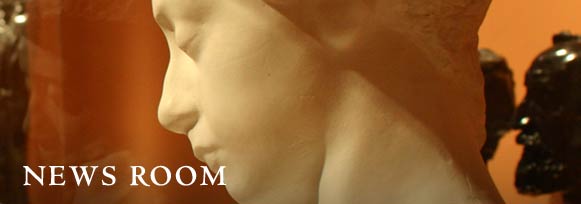Abstraction On The Move: Lichtspiel
Opus I
January 17 - March 4, 2001
Contact: Jill Osaka, Public Relations Manager, 650-725-4657.
STANFORD, CA AUGUST 2000—Opus I (1919-1921) is one of the earliest purely abstract films made and is one of the few that were filmed in black and white and then hand-tinted. Created by the German painter Walter Ruttmann (1887-1941), it is among a handful of similar experiments by artists of the early to mid-1920s, including Hans Richter's series of Symphonie films (1921-5) and Viking Eggeling's Symphonie Diagonale (1923). Ruttmann began experimenting with film immediately after World War I, having become increasingly impatient with the static quality of painting. He founded his own film company in Munich in 1920, and conceived of and patented a "tricktable" (tricktisch) for the production of abstract films. Opus I, made between 1919 and 1921, was his first product and it is likely that he used the tricktable to make the film.
This exhibition focuses on how and why the film was made, and its aim is to make film abstraction more familiar to the general public as well as to scholars. The film (running time: 10 min) will be on view in the Lynn Krywick Gibbons Gallery from January 17 to March 4, 2001 and will run alternately without music and with music composed by Max Butting. The exhibition is curated by Gabriela Muller, graduate student in the history of art at Stanford University.
Several concerns intersected in abstract films like Opus I: an engagement with various kinds of abstraction; a concern with motion and the visualization of the passage of time; a desire to make a contemporaneous art which could give expression to post-war, industrial, and technologized life; and the debate about film as art. Most avant-garde artists at the time, as well as theorists and critics, agreed that mainstream film was not an art but rather a debased form of entertainment. Many abstract artists argued that film could become art only if it turned its back to representation and began to engage with abstraction. The early abstract filmmakers, simply by making their films, claimed this medium as an art form.
Opus I allows viewers to revisit an exciting moment in film history in which the medium's properties, aims, and destiny were not firmly defined but were, rather, hotly debated.
Accompanying this exhibition will be four dates of additional film screenings. On February 1 at 6:30 pm and February 3 at 2 pm, Walter Ruttmann's other Opus films, Opus II, III, and IV, Hans Richter's Rhythmus 21 and 23, Viking Eggeling's Symphonie Diagonale, Man Ray's Retour ˆ la Raison, and Marcel Duchamp's Anemic Cinema will be shown. On February 8 at 5:30 pm and February 10 at 2 pm, the beginning sequence of Ruttmann's Berlin, Symphony of a Great City, Fernand LZger and Dudley Murphy's Ballet MZcanique, and Man Ray's Emak Bakia will be screened. These four screenings will take place in the Cantor Arts Center Auditorium.



